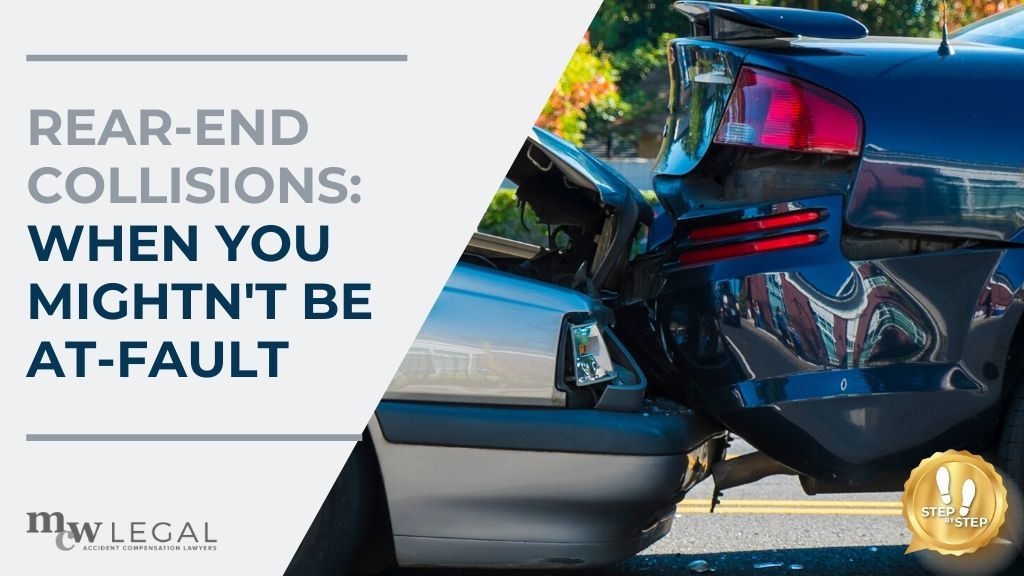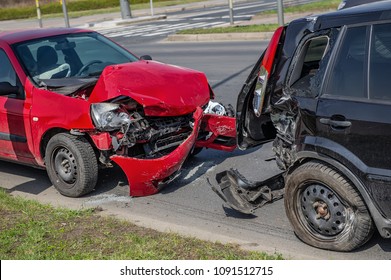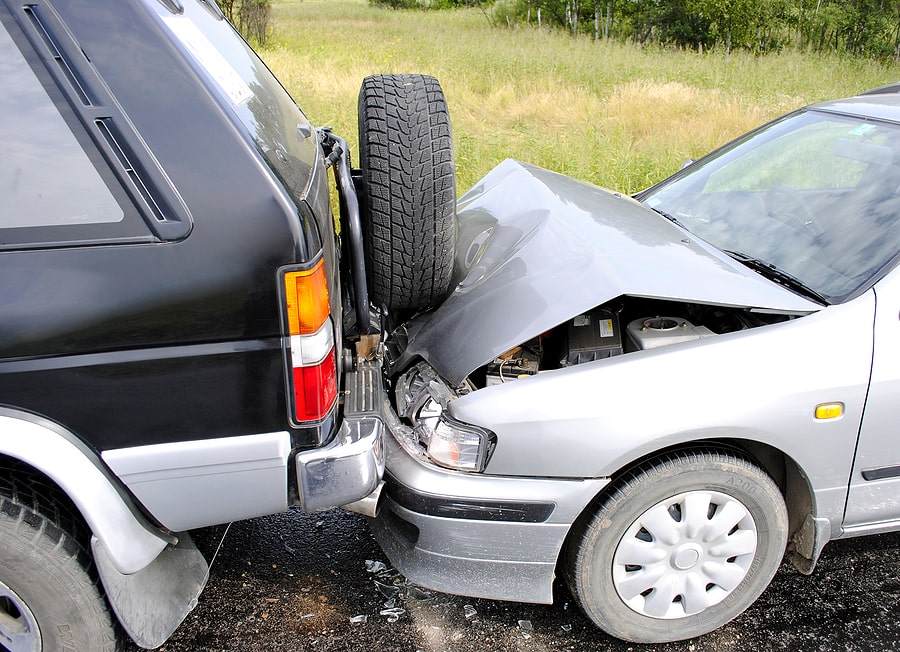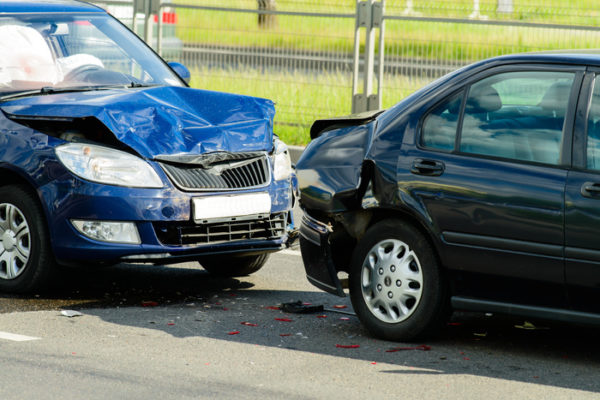rear end collision fault australia
Is it pre-determined that the car from behind is always at fault. A rear-end collision may in some cases be deliberate such as being rammed from behind or caused deliberately by suddenly braking by the car in front.

Who Is At Fault In A Rear End Collision Jack Bernstein Injury Attorneys
The driver of the car that rear-ends a leading vehicle will almost always be at least partially negligent negligence is the legal principle that determines fault for a car accident.

. Drivers must pay attention to road conditions weather conditions and traffic patterns. The most severe accidents may even involve multi-car pileups and totaled vehicles. Rear ended car accident In most cases the driver who ran into the back of the other vehicle is usually found at fault.
The lead driver could be at fault for a rear-end crash in this situation. The main reason the driver in the rear is at fault in a rear-end collision is because motorists are expected to adhere to the assured clear distance ahead rule in order to avoid a rear-end wreck. When there are two cars involved in the rear end collision it is usually the driver who hit from behind who is deemed to be at fault and liable for damages.
This is because every driver has a duty to follow other vehicles at a safe distance that varies. In accidents where three or more cars. On top of the damage to your car youre likely being chased by the other drivers insurer.
A police report helps establish a rear-end collision fault and so you should always contact the police to report the accident and have the police make a report even if at that moment in time you feel that the property damage is small or your bodily injury is minimal. When the driver in the rear applies the brakes but is still unable to avoid the vehicle in-front or one around a sharp corner the motorist in the rear is in violation of the assured clear distance. In short the rear driver is almost always at fault and will be found liable for damages.
This can be tricky because the car in front might have slammed on their brakes suddenly but it can often be argued that with the right amount of space left a driver should have enough time to safely brake without crashing into the vehicle in front. How to determine whos at fault in a rear-end car crash. If this can be clearly determined the car at the rear is responsible.
In most cases they occur in areas where vehicles come to a complete stop and drivers are required to judge when best to move off such as roundabouts and traffic lights with the collision occurring when one of the drivers misjudges the timing of the other. You will need to name both parties as the first and second defendants. This can range from dented bumpers and broken lights to caved-in trunks and misaligned steering columns.
What is the ruling on rear-end collisions in Australia roads. There are multiple vehicles involved and another car pushed their vehicle forward. In a rear-end accident involving two vehicles the driver of the rear car is at fault unless the collision occurred due to the front car rolling back in which case the driver of the front car will be liable.
Rear-end collisions are the bane of motor vehicle CTP insurers because they commonly occur and inevitably result in injury. This means that you are not automatically at-fault in Texas if you hit someone from the back. Brake-checking is a common form of road rage that.
In fact a shocking 360000 Australian motorists reported being involved in an accident in the year ending July 2018 with rear end crashes being the most common car collision making up one-third of these accidents. Being demonized for something that. The driver in front accelerated in reverse.
Get the basics on proving fault for a car accident Establishing Fault for Rear-End Accidents. If the accident involves three or more vehicles the driver of the last car will be responsible for the damage to all cars involved. If it cannot be determined who was at fault and you are not insured a claim can be made to the Queensland Civil and Administrative Tribunal QCAT if the amount of your claim is less than 25000.
You could be injured. In most rear-end accidents especially where only two cars are involved its the driver of the car that hit the other car from behind whos considered to have caused the accident. However if there are two cars involved and one rolls back into the car behind regardless of how close the vehicle behind was the driver at the front is generally at fault.
If not when is the car from behind not at fault. After taking into account all of the above a driver must leave enough room between their vehicle and the vehicle ahead to stop or avoid a crash. Before you make a third-party claim against the other driver you need to be able to prove the collision was not your fault.
Factors found to be related to an increased incidence or severity of rear-end crashes include. Aside from physical consequences rear-end collisions can also result in various levels of damage to the vehicles involved. Depending on the fault ratio assigned to each party it may not be enough for you to.
Rear end collisions are a form of road traffic accident where one vehicle crashes into the back of another. Weve all heard the story go if you rear-end someone then its your fault. A rear-end collision occurs when one vehicle collides directly into the back of the vehicle in front of it.
There are some situations where the driver in the back may not be liable for a rear-end collision. Figuring out who is to blame for a rear-end collision. Understanding Rear-End Accidents.
Crashes often occur when. The rear driver is usually at fault because they. A rear end driver may not be to blame or may only be partially to blame in any of the following situations.
As rear-end crashes are a common collision type at intersections they have been targeted as part of the strategy. So when youve rear-ended someone and you think they were to blame it can be frustrating. You could end up in a back and forth tug of war of his fault her fault.
So whos at fault and why. A rear-end collision could occur if the lead driver cuts off the rear driver during an unsafe lane change. Merging on top of or right in front of another driver without leaving enough room is dangerous and can cause an accident.
Hard braking the leading driver slams on his or her brakes too quickly. Most commonly injuries sustained in rear-ender accidents include spinal injuries such as whiplash injuries to the neck and back head injuries and strain injuries to the shoulders and upper limbs and chest injuries. The Rear Driver is Usually at Fault in a Rear-End Car Crash.
This presumed negligence also makes them liable for both damage and injuries. Hard acceleration the following driver accelerates too quickly. Injuries that can have long.
Youd need to talk to a lawyer for an accurate answer to a specific case but in general the guy who runs into someone from behind is liable unless. For example if you engage in litigation in a rear-end collision a jury may determine that one both or none of the drivers involved in the accident were negligent. The National Road Safety Strategy has identified intersection crashes as one of the most frequent crash types occurring on Australian roads.

Who Is At Fault In A T Bone Car Accident And What To Expect

Rear End Collision Images Stock Photos Vectors Shutterstock

Pin On The Traffic Safety Dividend

Some Auto Insurance Companies Quoted Higher Premiums To Drivers With Lower Paying Jobs And Less Education Investigation Shows In 2021 Car Accident Injuries Car Accident Lawyer Accident

Rear End Collisions In North Carolina Car Accident Lawyer Car Accident Car Accident Injuries

Rear End Collision Why You Might Not Be At Fault Mcw Legal

Rear End Collisions Are The Most Frequent Type Of Collision Abels Annes P C

Pin On In The Time Of The Butterflies Summative

Common Injuries After Being Rear Ended Gary Martin Hays Associates